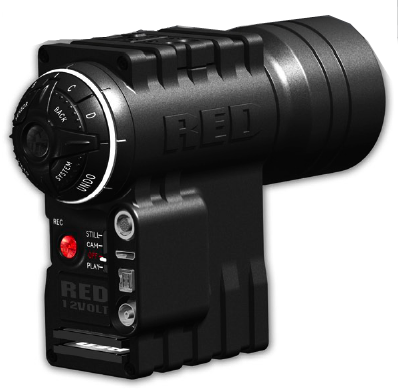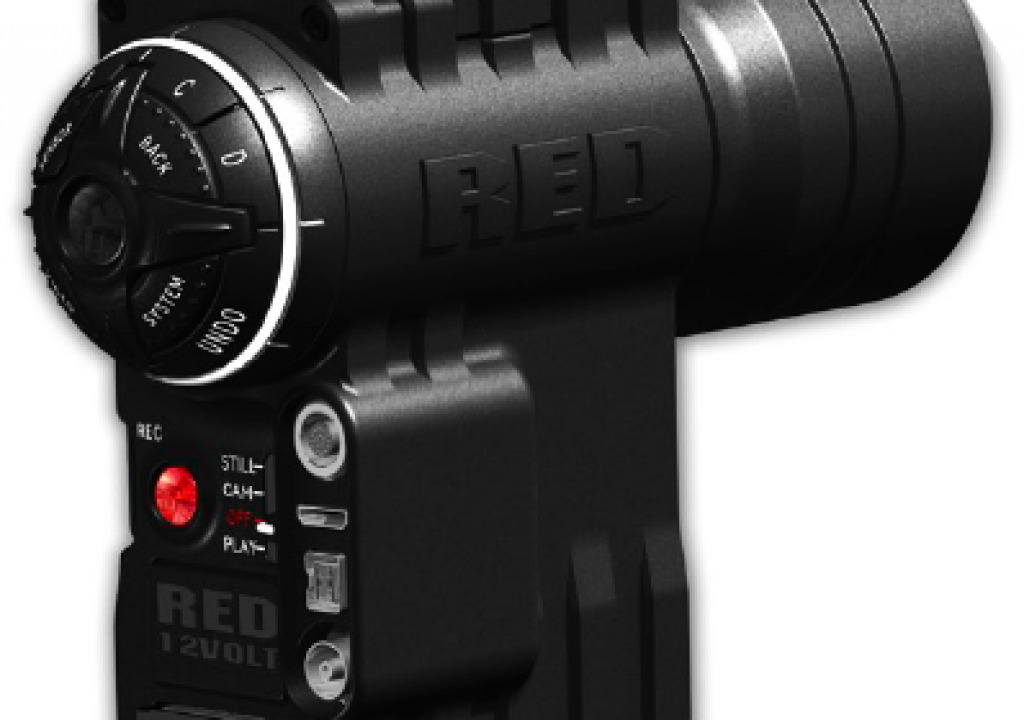
RED will not debut Scarlet, its entry-level camera, until early next year, which means that those who are already hype-weary with all things RED are already moving on to a different part of the site. Nontheless, there are solid reasons that Scarlet will change the entire landscape of low-budget digital video, assuming RED can get enough of them into the hands of the public (more about that at the end). Scarlet’s impact will be somewhere between that of the Canon 10D when it debuted and that of the iPhone. Here’s why.
1) 3K native sensor. It’s easy to lose sight of how major a step forward 3,000 pixels of horizontal resolution is for a digital video camera when that camera is debuted alongside an existing 4K camera and a 5K camera due at the same time. So let’s try this with the hype language used by the digital still camera manufacturers: 8.5 megapixels. Per frame. And this is not cheating by calling a 1280 native sensor HD (yes I’m talking to you, HVX-200). 3k means you could cut this image down 35% to HD. You could sneak it onto an IMAX screen without anyone seeing pixilation. It will be years before Sony or Panasonic have anything like this at the price. Speaking of which…
2) Under $3K price. The per-pixel price of this camera is approximately 1/10 that of the original RED when you consider that a full kit to operate a RED camera is roughly $40K. Just as RED (the company) is offering a free trade-in to upgrade to the 5K Epic, they could offer a free downgrade to everyone who bought into RED on the cool factor but actually wanted something that would shoot without a full lens kit and scads of dedicated storage. I bet someone would take them up on it.
3)Framerates up to 100 fps (180 fps burst). Day of show, Mike Curtis reported here that Scarlet would do a burst up to 120 frames per second, but later that same day Ted Schilowitz of RED was on record saying that a 180fps burst would likely be possible with the CF cards that will be available in 2009. Again, you can compare it to the marginally faster Epic and be underwhelmed, or you can compare it to the original RED (60 fps burst, 1/3 the throughput) or anything else out there (prosumers burst at way, way smaller resolution) and be properly blown away.
4) Redcode RAW. I mentioned above that RED could call this an 8.5 megapixel camera. The fact that this camera records RAW data means – think about this – you are recording 24 (or 60, or 120) RAW digital stills per second. The soccer mom can choose a digital SLR starting at a few hundred dollars and a digital video camera in the low 4 figures that heavily compresses HD to tape or a P2 card, or for the same money, use one camera that does both, better. That’s only one example of someone who won’t bat an eyelash about a fixed lens.
5) RGB output. Scarlet is depicted with an HDMI port and Schilowitz indicated that it will generate RGB images – whether to the card or only as output, we shall see.
6) No kit required. Not shown on the prototype is audio (either a mic or input, both of which will be on the camera according to Schilowitz). It has an LCD.
7) Fixed lens custom-designed for the Mysterium sensor. We’ve come to expect a built-in lens to be a plastic Zeiss or some other inferior, non-depth-of-field capable point-and shoot type of thing, but RED Digital Cinema has its roots in optics and this is the one place they are least likely to cut corners, even at the price. And considering how many great images have been created with plastic lenses simply because the camera was more available and the operator knew how to get the most out of it – for those who aren’t DP’s invested in lens kits, enough said. Except…
8) Customization. There’s more to the story than 6 and 7. Scarlet will work when mom pulls it out of the box, but as this video also shows, it can be kitted out rather extensively and includes intriguing hacker options such as “wifi control.” All RED accessories (other than custom lenses) work with Scarlet.
9) Multi-function operation. That ball-shaped thing on the back of the camera is an as-yet-to-be-designed multifunction device for zoom, focus and who knows what else (the prototype shows an intriguing “undo” label).
10) Fearless market position. RED, it should be noted, was not located with any of the other camera companies at NAB; it was in the lower south hall with the software post-production companies, an appropriate place for “the post-production camera.” How on earth will Panasonic, Sony and the others respond to a $3k 3k camera? Get your snow shovel ready for next winter.
10+1) Apple partnership. The question came up, how will a tiny company like RED reach their goal of getting it “in as many hands as possible”? The answer, and you heard it here first (with absolutly no hint of confirmation from anyone at RED – speculation only for the bonus point): the Apple Store. Two companies dedicated to changing the game of entire industries; it’s a match made in California.

